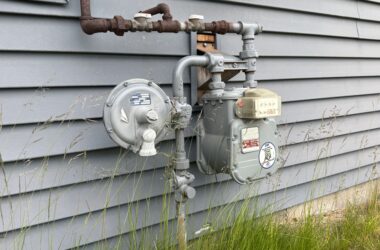Alaska is taking another step toward more renewable energy in the coming years after the largest solar farm in the state was greenlit for construction on the Kenai Peninsula on Wednesday. The project, a collaboration between Homer Electric Association and Solstice Energy, LLC, aims to build a 300-acre solar farm in Nikiski.
HEA announced on Wednesday, Aug. 14, that its subsidiary, Alaska Electric and Energy Cooperative Inc., would proceed with a Power Purchase Agreement (PPA) with independent power producer Solstice Energy, LLC.
Under the agreement, which has been in the works since 2021, HEA will purchase 30 megawatts (MW) of solar energy produced by Solstice Energy from the Puppy Dog Lake Project in Nikiski.
According to HEA Chief Strategy Officer Keriann Baker, Homer Electric gave the project a green light because it offers energy production cost savings to the utility company and rate hike protection for HEA members. “We’re actually [going to be] paying less to purchase the energy from this project than our current cost of power today,” said Baker.
Baker explained that the project will result in cost savings for members, primarily through Cost of Power Adjustment (COPA) protection. COPAs are the utility company’s compensation for increased power production costs over time.
“It’s a straight pass through to the membership,” Baker said. “Not only are we purchasing power less than what we’re paying for natural gas today, but it’s a decades-long contract. So that’s going to protect our membership from the volatility and pricing of fuel.”
The idea is that the renewable energy solar farm will protect against “upward pressure” on rates by providing reduced costs to HEA for the energy.
Renewable IPP–Solstice Energy’s parent company–is responsible for Mat-Su Valey solar farms in Willow and Houston. Prior to the Puppy Dog Lake Project, the farm in Houston was the largest solar project in Alaska. The Willow farm provides power to about 200 homes, and the Houston farm supplies energy in the Big Lake area.
“A recent data point is, during a recent grid outage, the Houston solar farm stayed online and actually still supplied [energy] on a cloudy day,” said Jennifer Miller, Renewable IPP’s CEO and CO-Founder. “We weren’t at peak output, but we still supplied 3 megawatts of power and helped stabilize the grid and minimize the impact of the outage.”
Miller added that, in addition to the energy efficiency provided by the Puppy Dog Lake Project, the peninsula can expect an influx of new jobs for the project’s duration. “When we get into the construction phase, we’ll be hiring local to build that solar farm, and we’re estimating between 40 to 60 jobs, and the construction will take place over two years.”
The Puppy Dog Lake Project has an expected completion date of late 2027 to early 2028.






